Everyone knows about mammals like bears that hibernate. But what other animals hibernate in winter? There are surprising insects and amphibians on the list, even a primate!
Animals that hibernate in winter include mammals (mice, bats, groundhogs, and raccoons), insects (honeybees, ladybugs, and beetles), and amphibians (frogs, toads, and salamanders).
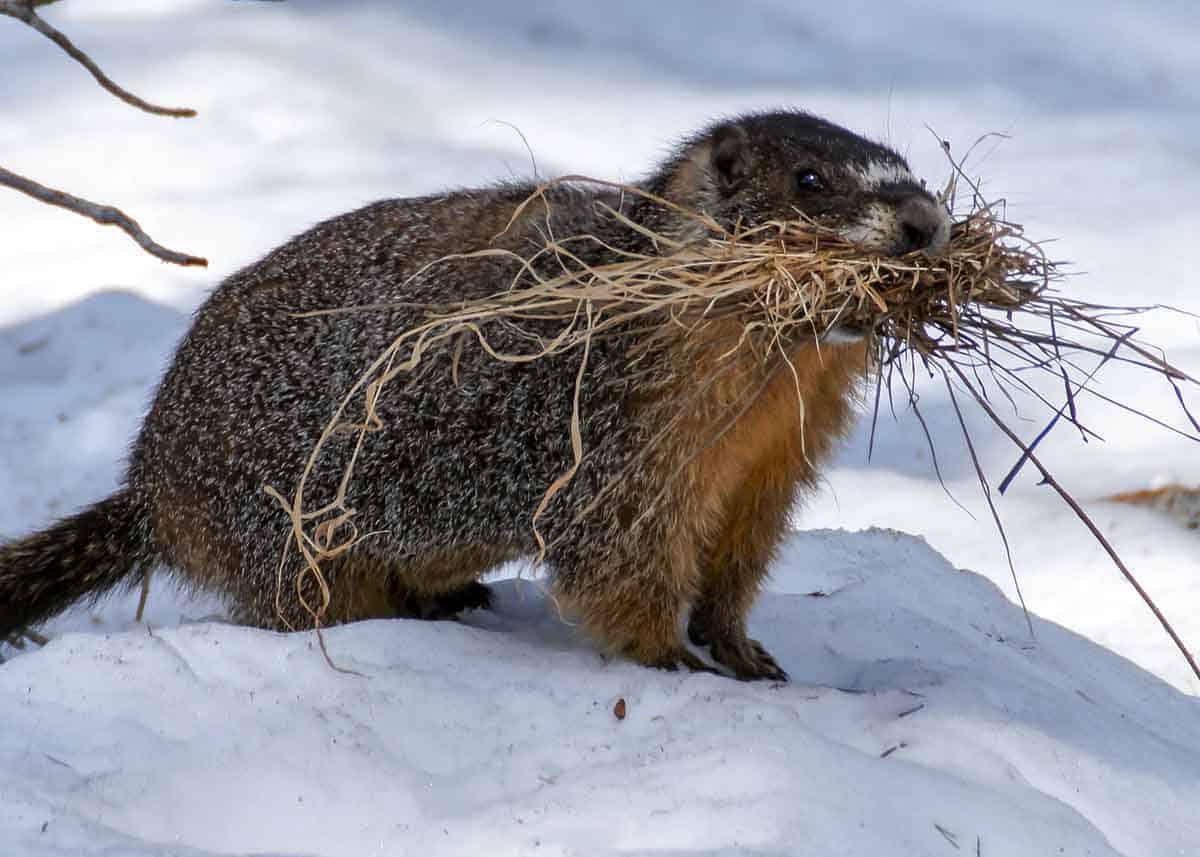
While many animals hibernate differently, the activity is basically the same. Either the temperatures are cold, or it’s too cold to find food. The best solution is to sleep through the bad weather.
Like strange animals? See more in our Cool and Weird Animal Guide
Table of Contents
15 Hibernating Mammals
Mammals are the largest group of animals that hibernate. The main reason is that hibernation is a cold-weather survival strategy to get out of having to forage for food when almost everything is dead.
Most mammals have fur, and fur allows mammals to be the largest group of cold-weather dwellers. There are probably more insects that survive cold climates, too, but mammals are the most visible.
1. Bears
Everyone knows about hibernating bears. They are probably the most famous of all hibernating animals.
The funny thing is, bears do not truly hibernate; they go into light hibernation because they occasionally wake up and even venture outside for 5-7 months.
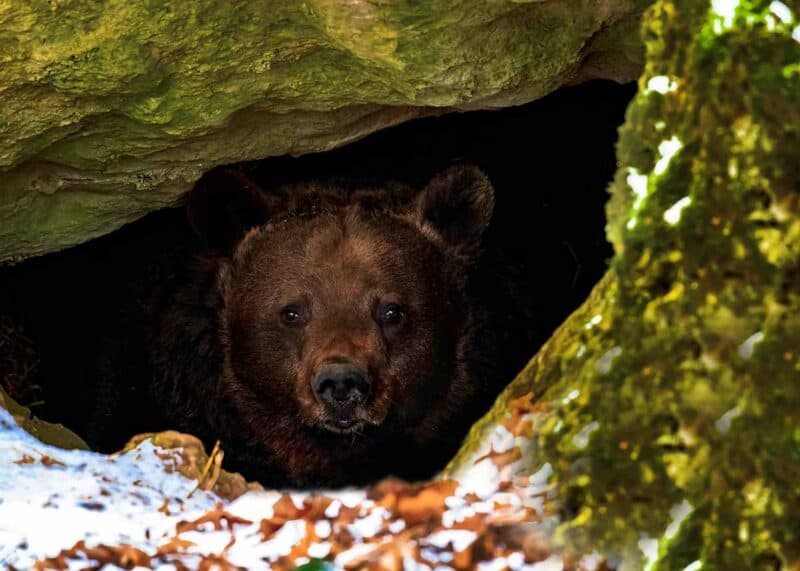
2. Bats
Hibernating bats can sleep in caves but also human structures like barns, attics, and even inside wall spaces for up to six months.
When awake, bats have a staggering heart rate of about 400 beats per minute. The rate drops to only 25 during hibernation, when the bat may breathe once a minute.
3. Deer Mice
Deer mice are light hibernators that sleep in groups to share body heat. They may sleep all day or venture out to forage for food at night.
They build nests that help conserve heat and hibernate near food and water. Due to their behavior, their hibernation varies from several hours to days.
4. Chipmunks
Chipmunks enter something similar to light hibernation or torpor. They keep stored food nearby to eat when they wake up during their four months of hibernation.
You should not see any chipmunks during winter because they burrow into holes three feet deep and stay with their stored food.
5. Ground Squirrel
Similar to chipmunks, squirrels store food for winter. Like a few other animals on the list, not all squirrels need to hibernate. Some squirrels live in year-round warm climates.
Did you know ground squirrels dig elaborate tunnel systems that even have bathrooms? They hibernate for 5-7 months.
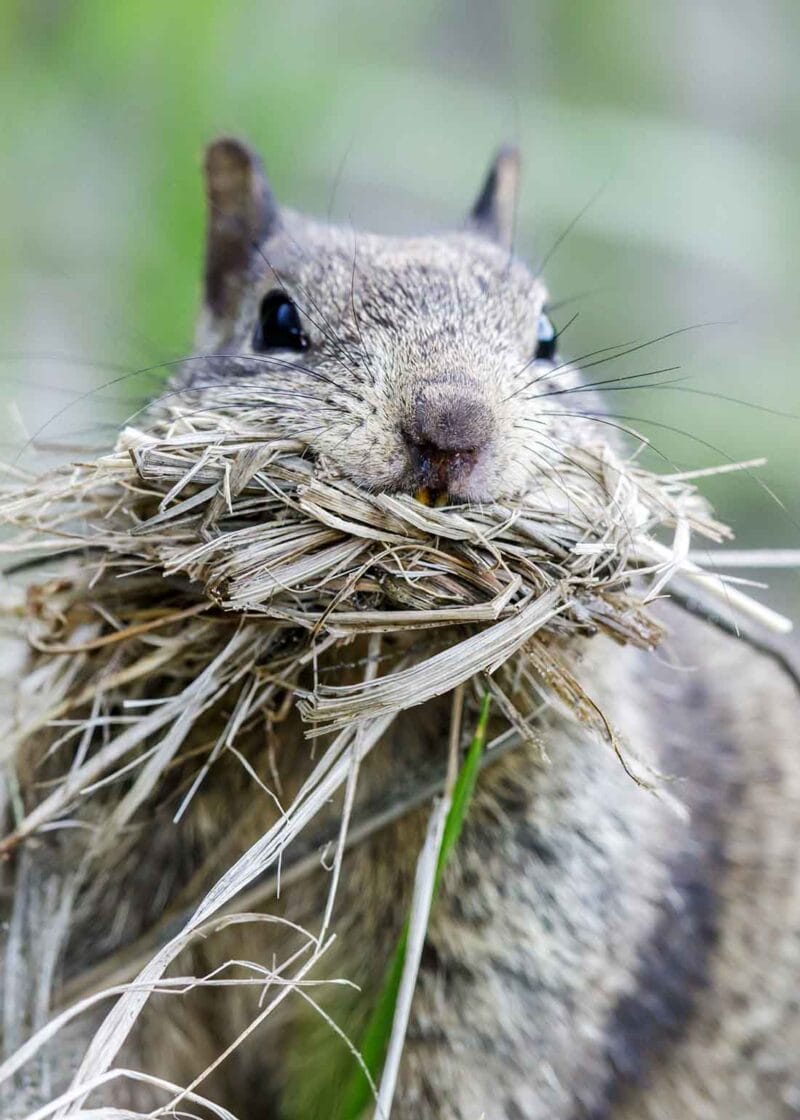
Learn more about the aggressive rock squirrels in the Grand Canyon. Rock squirrels hibernate in northern California, but don’t need to in the south.
6. Fat-Tailed Dwarf Lemurs
Like many other small mammals, lemurs sleep in a group to share body heat. Interestingly, this lemur is the world’s only hibernating primate for up to 7 months.
They do not need stored food because stored energy is why they have such fat tails. Their tails provide energy as they sleep.
7. Hedgehogs
Like many animals on this list, hedgehogs live in cold and mild climates. In more temperate regions, they may not need to hibernate. In cold climates, they can hibernate for as long as 5-7 months.
Hedgehogs are true hibernators but may wake to warm themselves in cold enough temperatures.
8. Groundhogs
Groundhogs are also true hibernators for up to seven months. People revere the ability hedgehogs have to predict the weather. They can tell whether winter will end early or late.
Groundhogs survive winter by digging deep enough burrows to enjoy stable temperatures, much like how big caves remain at about 70°F year-round.
9. Marmot
Marmots take hibernation to extreme levels by spending up to 8 months in hibernation, or approximately half their lives.
Like groundhogs, marmots dig deep enough burrows to maintain steady temperatures, insulate the inside with hay, and huddle together to generate even more warmth.
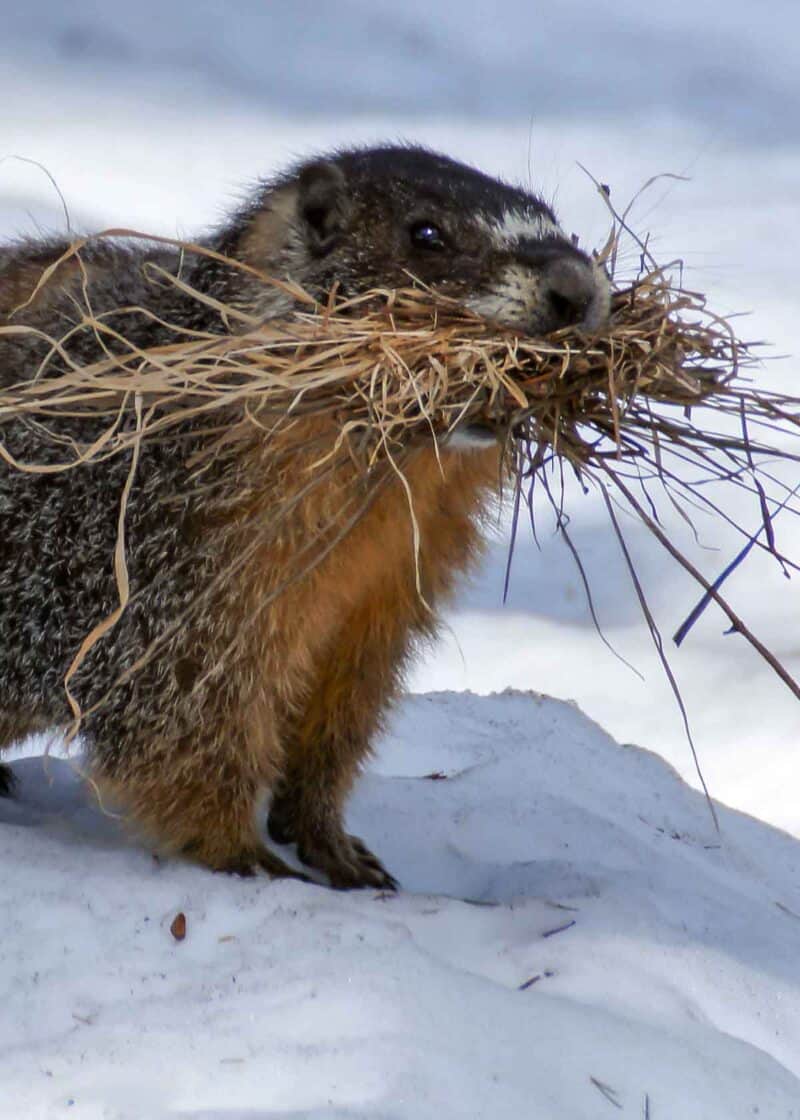
10. Skunks
Even though skunks are light hibernators, they are seldom seen or smelt during winter.
Since they wake up occasionally, they build their dens close to food and water. They can get a quick feed and go back to sleep in groups until nature calls again for three to five months.
11. Prairie Dogs
Most people understand that prairie dogs are not dogs, but did you know they are a type of rodent? Like many other rodents, they are light hibernators that keep food nearby.
Prairie dogs live in warm and cold climates, so they hibernate based on the weather. In the colder regions, they do not reemerge for up to six months.
12. Opossums
Opossums and raccoons go into similar types of hibernation known as torpor. Animals that rely on this type of hibernation have metabolisms that are too high to survive winter.
The main reason torpor exists is so these animals can munch on nearby food either already in their burrow or nearby if they venture outside for four to six months.
13. Raccoons
If you have ever watched a raccoon wash its food before eating, you probably realized these are clever creatures.
Not surprisingly, they do not try to survive cold temperatures by scavenging for food when there is none. They have cleverly stashed extra food away for the winter chill to survive for 4-6 months.
14. Hamster
While almost everybody thinks of hamsters as pets, they live in the wild too. Like many other small mammals, they like to keep food nearby and occasionally get their energy up during winter during a maximum hibernation period of six months.
Wild hamsters can be found in Europe and Asia.
15. Guinea Pigs
Guinea pigs come from the Andes mountain region. Most of the year, they enjoy stable temperatures, but occasionally they experience a freeze.
During these times, their bodies briefly shut down until temperatures rise, possibly only hours later.
6 Hibernating Insects
Not many people envision insects when they think of hibernation. Have you ever noticed you never swat flies away during winter? Insects hide from cold temperatures too.
16. Bees and Wasps
While the climate dictates the hibernation period because these insects will emerge when they feel spring-like temperatures, they go dormant for 6-7 months.
Styles of hibernation vary between sticking together and mass death, where only the queen survives.
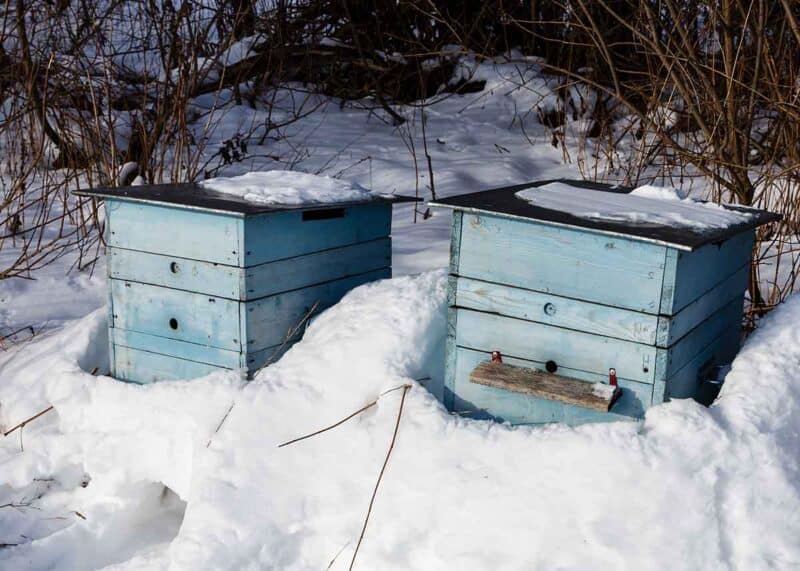
Honey bees get an honorable mention as far as hibernation goes. They worked out a strategy where most survive while protecting the queen. They go dormant for 6-9 months but do not sleep through winter.
17. Flies
This list of hibernators includes mosquitoes along with various flies. They take refuge wherever possible in trees and old logs. They can wake up on unseasonably warm days above 50°F and return to stasis in cooler weather for 3-6 months.
18. Butterflies and Moths
You may have heard about the few species of butterfly that migrate, like the Monarch butterfly.
All the rest, including moths, survive winter in stasis or may find a place to hide in your home for 4-6 months.
19. Beetles
Beetles have adopted a variety of survival strategies for different climates.
Some take refuge in your home for several months, while the June beetle burrows under the frost line for as many as nine months.
20. Ladybugs
You may have seen hundreds or even thousands of ladybugs grouping together as winter approaches. These groups seek out sheltered places with sun exposure, such as attics, for 6-9 months.
21. Box Elder Bugs
Also known as tree bugs, these insects love protected areas in homes or old trees. They wake up and move around on warm days and go back to sleep when the cold returns for 5-7 months.
4 Hibernating Amphibians
Amphibians hibernate in a variety of ways. They may dig into the ground, freeze suspended in ice, or take refuge in a leaf pile.
22. Frogs
Many frogs have frost resistance to the point where the blood freezes without causing injury or death.
They can survive because of glucose, which acts as a natural antifreeze. The strategy works so well that some frogs survive suspended in ice and emerge 6-9 months later.
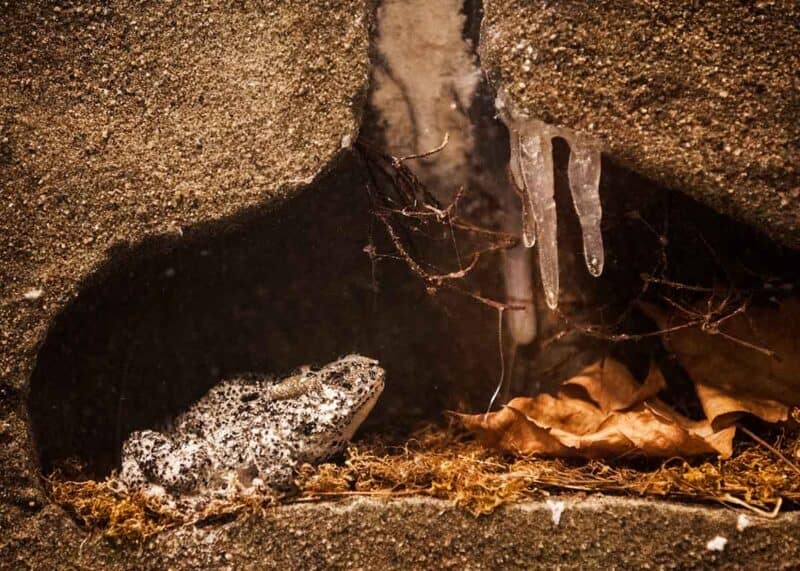
23. Toads
Toads survive winter in almost the same manner as frogs for at least six months. The old and sick are likelier to die, and toads tend to dig into the ground or a leaf pile.
24. Salamanders
There is still much that science does not know about how salamanders hibernate for 5-7 months. We know they take refuge anywhere in cracks, the ground, or anything that provides shelter.
25. Newts
Newts are similar to salamanders and hibernate much the same way for 5-7 months. Any protected place will do, even water. Unlike frogs, newts cannot freeze and need plenty of oxygen for survival.
FAQs
Hiding and sleeping to avoid the cold is a straightforward response, but there is a bit of science involved.
What is true hibernation?
True hibernation is rare and is when an animal goes to sleep with a very low heart rate, and is difficult to wake up for months.
What is light hibernation?
Light hibernation means an animal wakes up occasionally but often sleeps longer than a day and is nearly indistinguishable from torpor.
What is torpor?
Many animals wake up daily for brief periods to eat, drink, go to the bathroom, and possibly venture outside. These animals go into a type of hibernation called torpor.

Your Turn
What is your favorite animal that hibernates? Did I miss one? Let me know below!
Drew Haines is an animal enthusiast and travel writer. She loves to share her passion through her writing.
She graduated high school at sixteen and started her own business, Everywhere Wild Media. And she runs Everywhere Wild and JustBirding. She also guest blogs on Storyteller.Travel
She lived in Ecuador for 6 years and explored the Galapagos Islands. Currently based in N.S., Canada.
